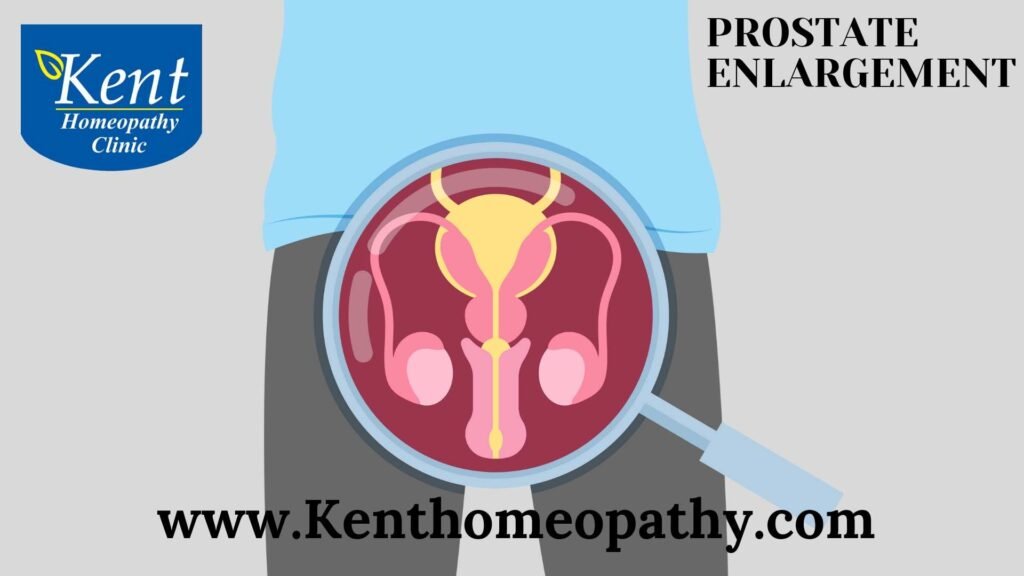Prostate Enlargement

Prostate Enlargement
Prostate Enlargement: Unveiling Symptoms, Causes, and Types
Prostate enlargement, also known as benign prostatic hyperplasia (BPH), is a common condition that occurs as men age. It involves the non-cancerous growth of the prostate gland, leading to various urinary symptoms. Understanding the symptoms, causes, and types of prostate enlargement is crucial for managing this prevalent condition.
Symptoms:
- Urinary Frequency:
– Increased frequency of urination, especially during the night (nocturia), is a common symptom of prostate enlargement. This occurs as the enlarged prostate may obstruct the flow of urine.
- Urinary Urgency:
– A sense of urgency to urinate, often accompanied by difficulty holding back urine, can be indicative of BPH.
- Weak Urine Stream:
– Reduced force or weak stream while urinating is a typical symptom. The enlarged prostate obstructs the urethra, affecting the flow of urine.
- Straining During Urination:
– Difficulty initiating or maintaining urination, often accompanied by straining, may be experienced.
- Incomplete Emptying:
– A feeling of not fully emptying the bladder after urination is a common complaint with prostate enlargement.
- Dribbling at the End of Urination:
– Dribbling or leakage of urine, especially after completing urination, can be observed.
- Urinary Retention:
– In severe cases, BPH may lead to urinary retention, making it challenging to empty the bladder completely.
Causes:
- Age-Related Hormonal Changes:
– The primary cause of prostate enlargement is thought to be age-related hormonal changes, particularly an increase in dihydrotestosterone (DHT), which stimulates prostate cell growth.
- Family History:
– Men with a family history of prostate enlargement are at a higher risk, suggesting a genetic predisposition.
- Hormonal Factors:
– Changes in hormonal levels, particularly a decrease in testosterone levels, may contribute to the development of BPH.
- Chronic Inflammation:
– Ongoing inflammation in the prostate may play a role in its enlargement.
- Obesity:
– Obesity has been linked to an increased risk of prostate enlargement, possibly due to hormonal changes associated with excess body fat.
- Diabetes and Heart Disease:
– Certain medical conditions, such as diabetes and heart disease, may be associated with an elevated risk of BPH.
Types:
- Stromal and Epithelial Hyperplasia:
– The two main types of cell growth in the prostate are stromal and epithelial. BPH involves the hyperplasia (increased cell growth) of both stromal and epithelial cells.
- Transitional Zone and Peripheral Zone Enlargement:
– The prostate is divided into different zones. BPH may affect the transitional zone or peripheral zone, and the symptoms can vary based on the zone involved.
- Diffuse or Nodular Enlargement:
– Prostate enlargement can manifest as diffuse (spread out) or nodular (with distinct growths or nodules) enlargement.
- Symptomatic vs. Asymptomatic Enlargement:
– Some men with an enlarged prostate may not experience noticeable symptoms (asymptomatic), while others may have significant urinary symptoms (symptomatic).
In conclusion, prostate enlargement is a common condition affecting men as they age. Recognizing the symptoms, understanding the causes, and exploring appropriate treatment options are essential for managing this condition and maintaining overall urological health. Regular check-ups and open communication with healthcare providers contribute to effective diagnosis and management of prostate enlargement.
Contact to know more
Contact
Timings
Monday to Saturday:
11:00 AM to 02:30 PM
06:30 PM to 09:00 PM
